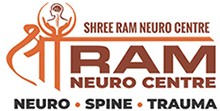The muscles and tendons that hold the shoulder in place make up the rotator cuff. It is among the shoulder’s most crucial components. It enables you to reach up and raise your arm. A rotator cuff injury, like a tear, can occur suddenly when you fall on an outstretched hand or gradually as a result of repetitive actions. Aging can also result in rotator cuff tears and degeneration.
Why to go with Surgery?
Home care treatments can heal numerous rotator cuff issues. You can take care of your shoulder joint and apply ice to the area. Physical therapy will help restore your shoulder strength.
Surgery can be your next option if these measures don’t provide any relief.
Surgery might be necessary if:
- Your shoulder pain hasn’t improved within 6 to 12 months
- Your shoulder is painful to move and has lost a lot of strength.
- The tendon in your rotator cuff is torn.
- Its hard to do any daily task, Pplay sports or Do your job.
Your shoulder’s function can be restored and your pain can be reduced with surgery. Some are performed as outpatient procedures. You could have to stay in a hospital for others.
What is the Procedure of Surgery?
The most common types are: Arthroscopic repair, Open tendon repair.
Arthroscopic repair: A surgeon will make one or two tiny skin incisions and then implant a tiny camera, known as an arthroscope, and thin, specialized instruments into your shoulder. These will enable them to determine which rotator cuff components are injured and the most effective way to repair them.
Open tendon repair: This procedure has been used for a very long time. It was the initial method of rotator cuff repair. Your surgeon may decide to use this technique if your tear is particularly extensive or complicated.
Recovery from Rotator Cuff Surgery
Compared to open tendon repair, arthroscopic surgery usually results in a faster recovery. You might experience more discomfort immediately after open tendon repair because it’s more complicated.
A full recovery will take time regardless of the type of surgery you have. You should anticipate spending roughly six weeks in a sling. In addition to protecting your shoulder, this allows your rotator cuff to recover. You won’t be allowed to drive for at least a month.

